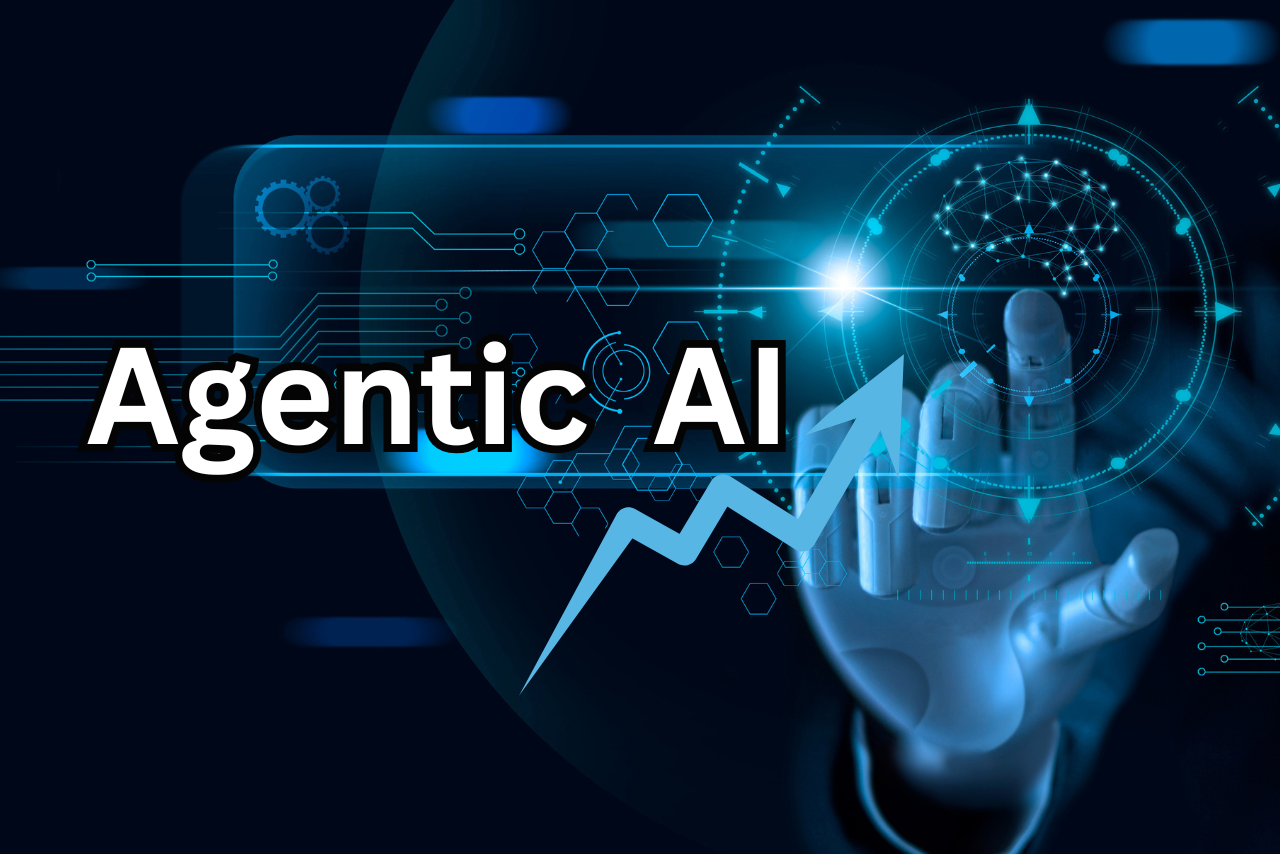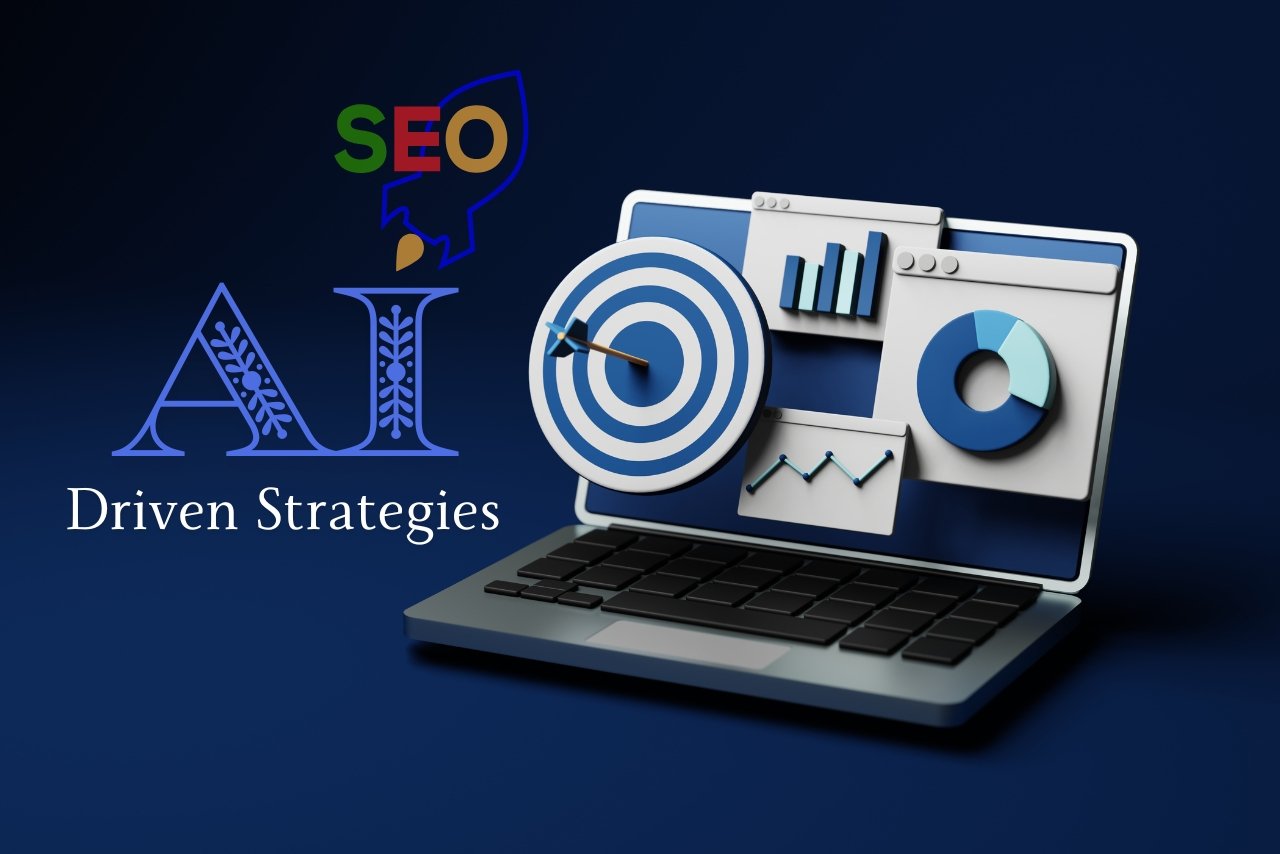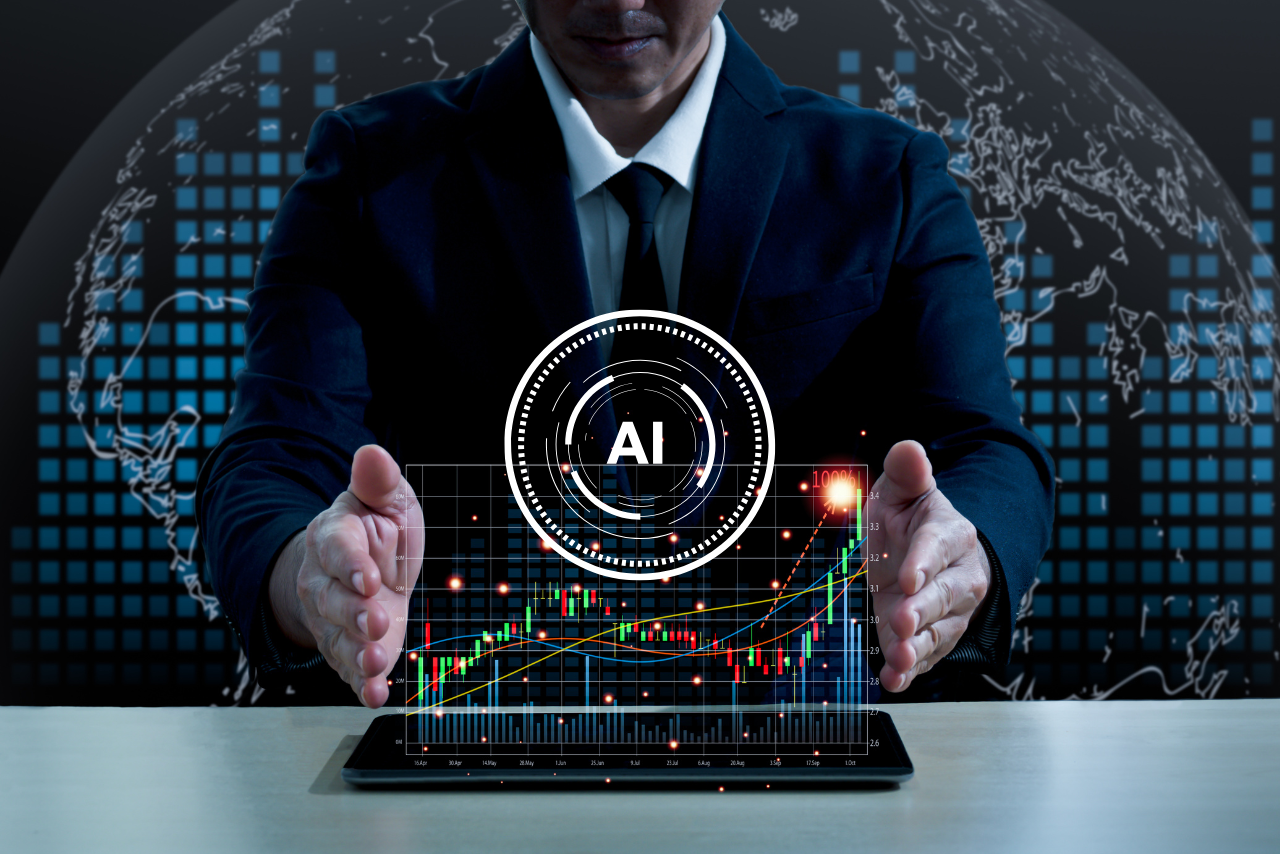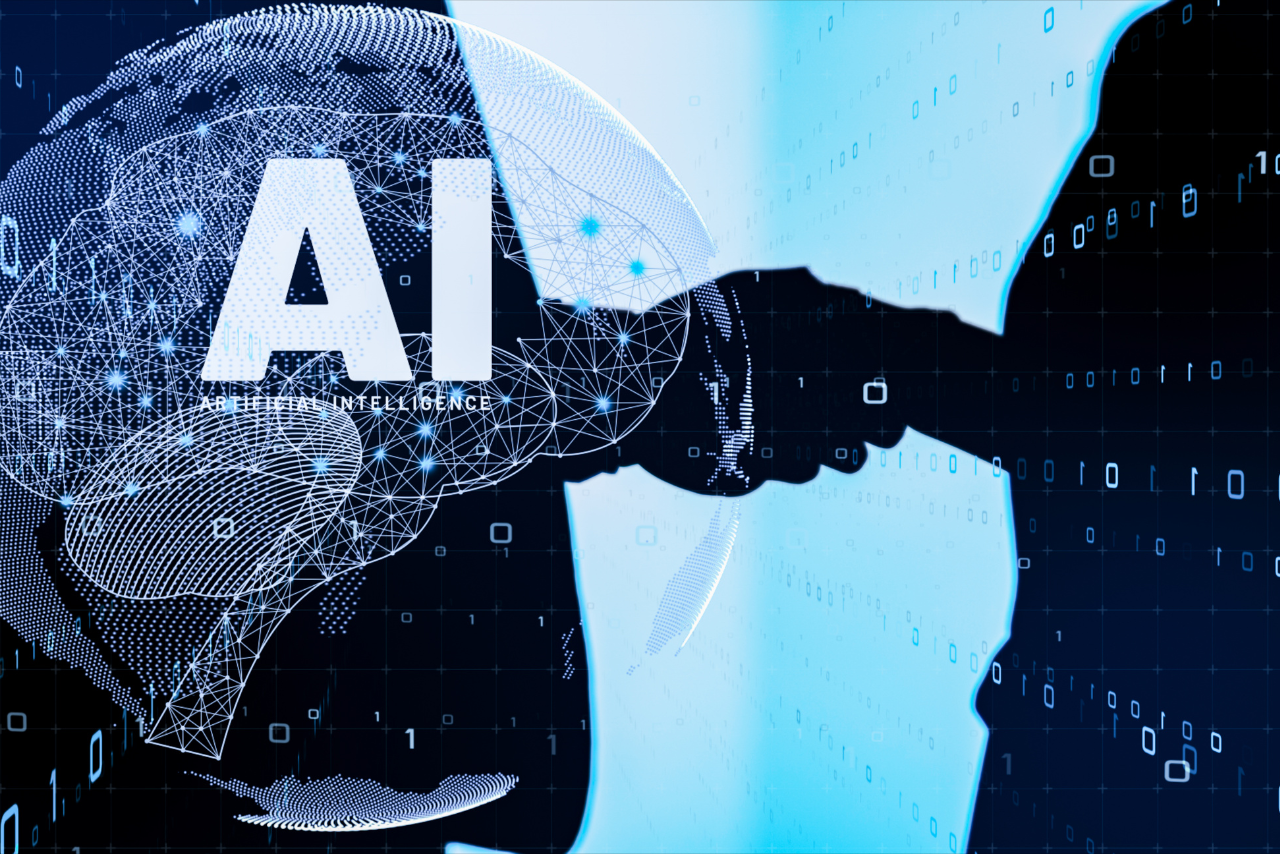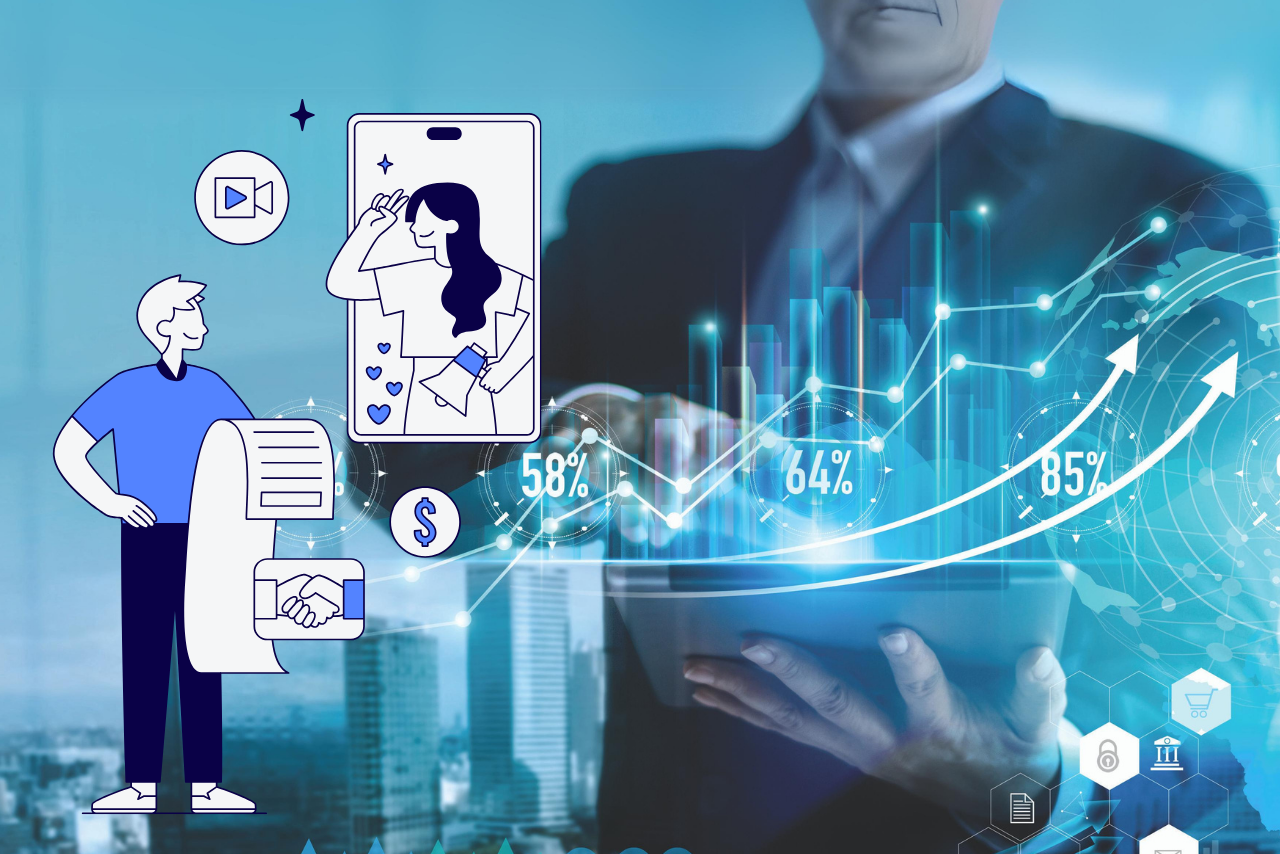Machine learning, a facet of artificial intelligence, is revolutionizing industries by endowing systems and machines with autonomous learning capabilities. Unlike traditional programming, machine learning relies on data analysis rather than explicit rules, making it versatile and adaptable. Its applications span diverse sectors, from chatbots and digital assistants to spam filters and autonomous vehicles.
Marketers are increasingly leveraging machine learning’s power to enhance personalization and customer engagement, with 82% already incorporating it into their strategies. This technology’s flexibility, ability to handle large datasets, and aptitude for predictive insights have led to precise customer segmentation, predictive maintenance, and superior recommendation systems. As it continues to evolve, machine learning holds the potential to drive innovation, minimize customer churn, and transform businesses across the board.
What is Machine Learning?
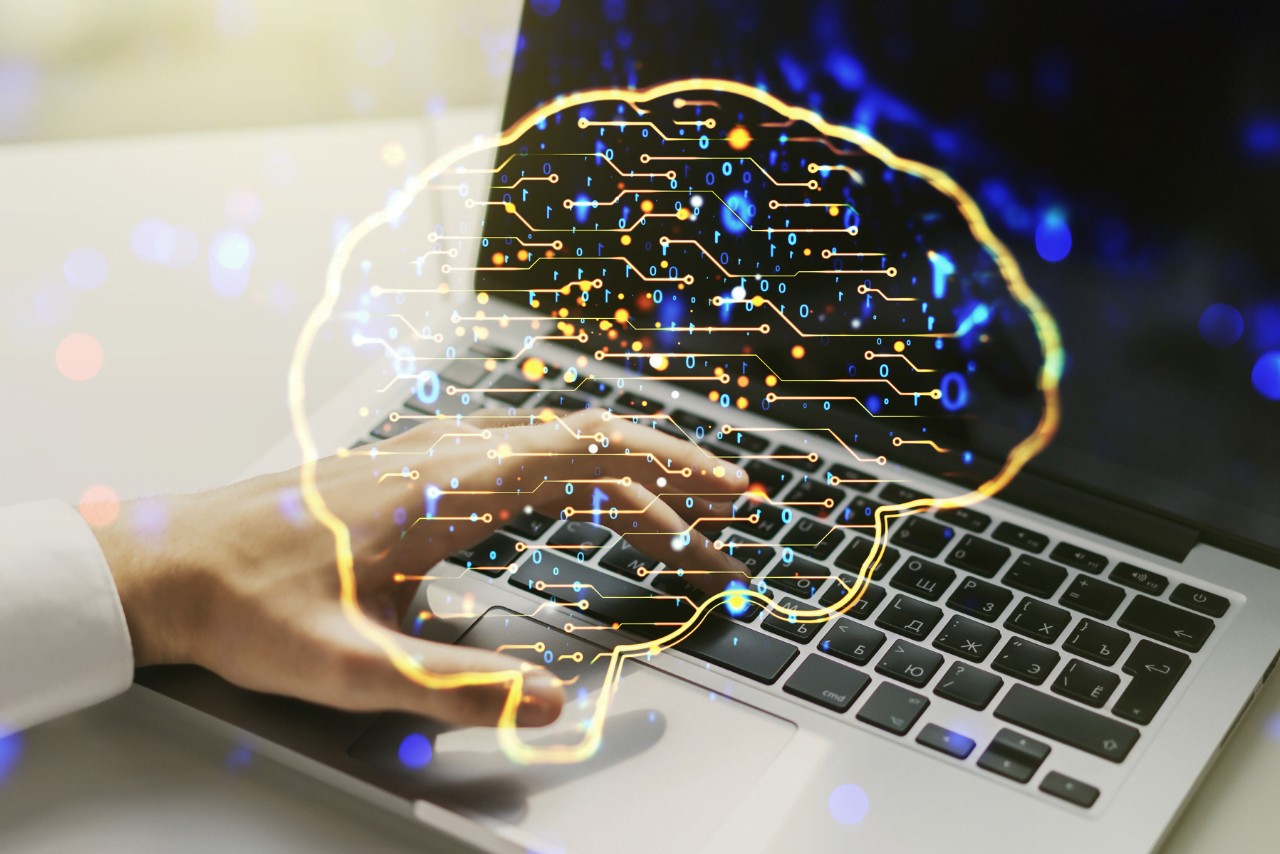
Machine learning is a set of artificial intelligence that enables a system or machines to learn automatically from changes in the data and experiences they have access to. Innovative results are required to analyze data and experience sets and find new technology.
Machine learning does not require intensive programming or algorithms/rules to make decisions. Investigate facts using big data. The more information you can access, the more you can learn and make informed decisions.
Companies of all sizes and industries are realizing the benefits of machine learning technology. These technologies are widely used in chatbots, spam filters, digital assistants like Siri and Alexa, autonomous vehicles, spam filters, and more.
Machine learning tools and techniques are well-suited to digesting specific types of big data. For example, it can recognize text in images and videos and insert or group similar data into groups.
Technology can also create predictions for businesses, create missing data, create and optimize content, improve marketing automation, and more.
Recent research shows that 82% of marketers use machine learning and artificial intelligence to develop more effective personalization strategies. Additionally, 64% of them will use these technologies to deliver their customers curated and targeted content, offers, promotions, and more.
One of the key benefits of machine learning for business development is that it improves marketing and sales through a clearer understanding of data.
Why do we need to integrate Machine Learning into Business Intelligence?
What are the advantages of programming a computer instead of doing a task manually? Below are three key benefits of using Machine learning in business intelligence.
- Machine learning in business intelligence allows you to quickly and easily complete tasks that are too tedious for humans. Image and speech recognition are the most common examples of this work. Machine learning can handle these tasks very well with a few training steps.
- Machine learning algorithms efficiently analyze large and complex data. Medical examples include medical records and textbooks, astronomical data, weather forecasts, and genomic data. The amount of digitally captured data is increasing every day and has reached 149 ZB (i.e., 149,000,000,000,000,000 GB).
- According to Statista, by 2024, files will clearly contain a significant amount of data that is too much for humans to understand. The ability to identify significant patterns in large and complex data sets represents a promising opportunity. Combining self-learning algorithms, unlimited memory, and machine learning in business intelligence opens new possibilities with fast processing.
- Machine learning algorithms are very flexible and can adapt to input data. A famous example is machine learning algorithms for visual character recognition (especially handwriting recognition), which can adapt to and decode users’ writing styles. Another example is intelligent spam filters, which evolve as the type of spam changes.
How does Machine learning in business intelligence work?
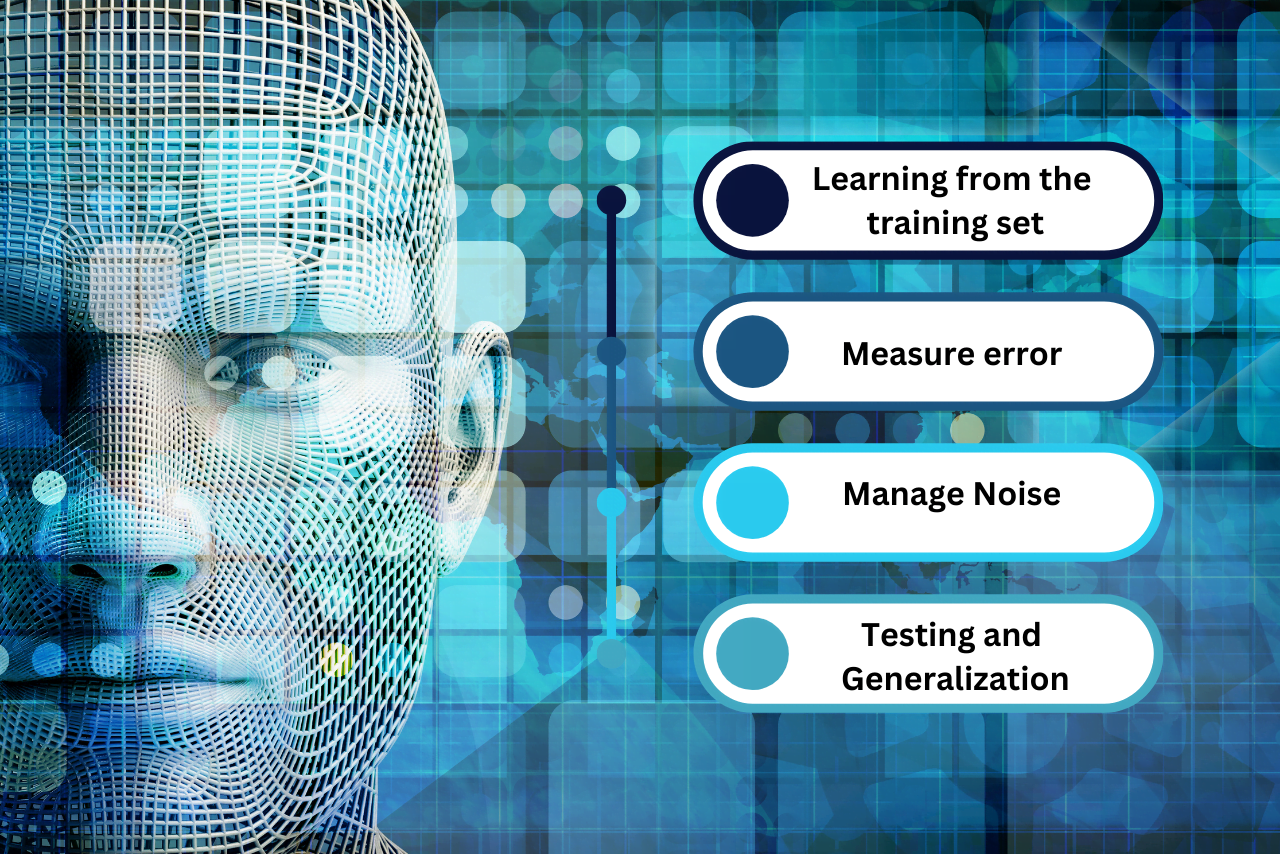
The three main components of a system are model, parameters, and learning.
- A model is a system that produces predictions.
- Parameters are the factors that the model considers when making predictions.
- Students adjust parameters and models to match predictions with actual results.
Let’s continue with the beer and wine example above to understand how machine learning works. Here, a machine learning model must predict whether a drink is intoxicating or alcoholic. The selected parameters are the color of the beverage and the arc percentage. First step:
1. Learning from the training set
The dataset is taken from several beverages labeled by color and alcohol content. Now, we need to describe each species, i.e., H. Define wine and cider according to the importance of each parameter type. In detail, the model can determine whether it is a new wine or beer.
The color and alcohol percentage parameter values can be represented as x and y, respectively, and then (x, y) defines the parameters of each drink in the training data. This data set is called the training set. These values are plotted on a graph and represent the hypothesis as a line, box, or polynomial that best fits the desired outcome.
2. Measure error
Once you have established your model in a specific discipline, you must check for misconceptions. We use a new data set to do this. The result of this test will be one of the following four results.
- True positive: when the model predicts the existence of a condition.
- Negatively true: The model cannot predict the condition (even if the condition does not exist).
- False Positive: When the model predicts that the condition does not exist.
- False negative: The model failed to predict the condition when it existed.
The sum of FP and FN represents the total model error.
3. Manage Noise
For simplicity, we consider only two parameters to solve the machine-learning problem: color and alcohol content. However, solving machine learning problems requires hundreds of parameters and a large amount of training data.
- Generated hypotheses will have more errors due to noise. Noise is an undesirable anomaly that obscures underlying relationships in a data set and disrupts learning. The reasons for this noise are:
- Large training data sets.
- Some data is entered.
- Data labeling error.
- The set did not include features that could influence classification due to missing data.
To simplify the situation as much as possible, you can accept some training errors due to noise.
4. Testing and Generalization
Although an algorithm or appropriate training hypothesis may be well established, it may fail if the application is based on data other than the training set. Therefore, algorithms are essential for understanding new data. To evaluate this, you can try it on a new data set. Furthermore, generalizability refers to the model’s ability to predict new data.
Suppose the molecular optimization algorithm is to be as simple as possible. In that case, it will produce fewer errors in fitting data but more errors in processing new data. We call it a defect. On the other hand, if the hypothesis is too complex to fit the learner’s findings, it usually cannot work well. This is overtraining. However, the results are fed back for further training.
10 Business Benefits of machine learning in business intelligence
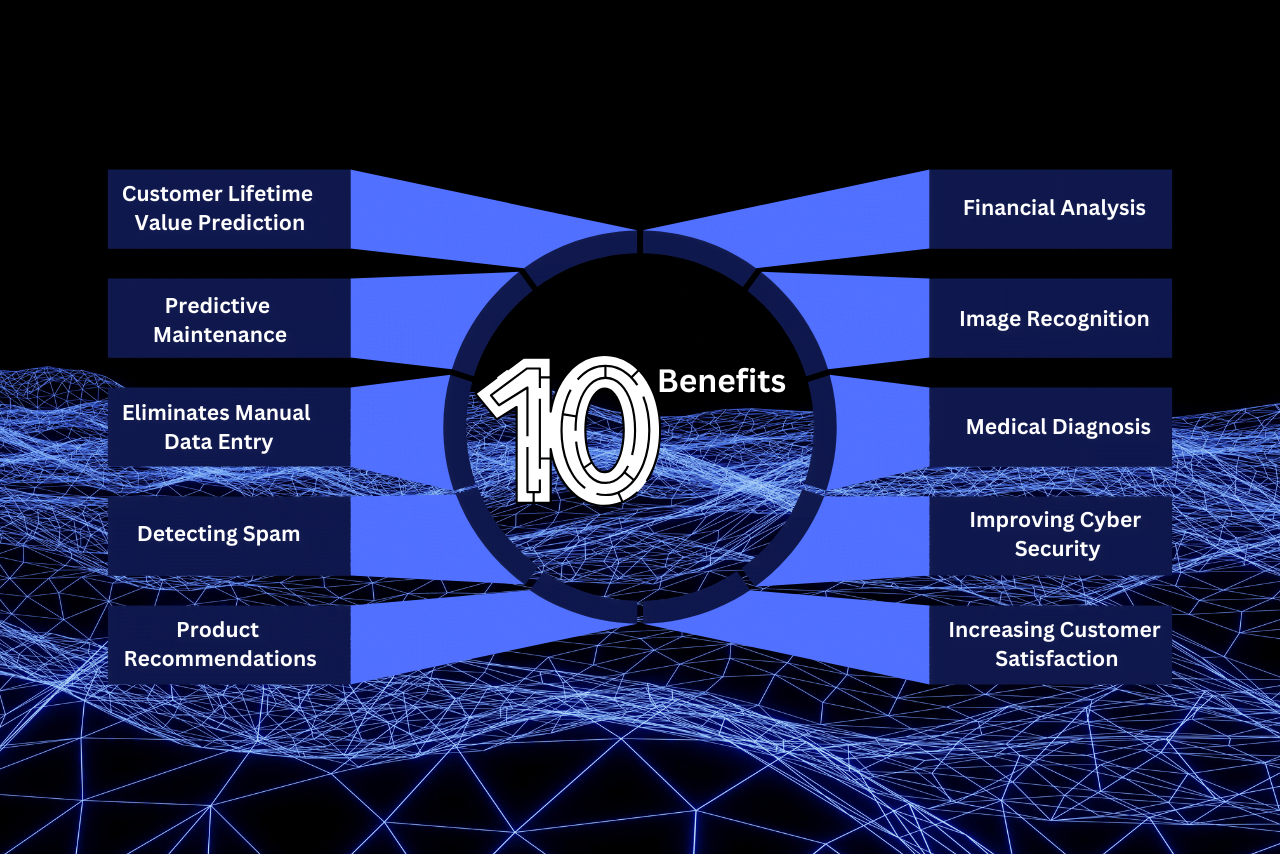
Machine learning in business intelligence helps draw meaningful conclusions from large amounts of raw data. Machine learning can solve many complex business problems and predict customer behavior when used correctly. We have also seen big tech giants like Google, Amazon, and Microsoft. Showcase your machine learning platform in the cloud. Here are some key ways machine learning can help your business:
1. Customer Lifetime Value Prediction
Predicting customer lifetime value and segmentation strategies are among the biggest challenges facing marketing today. Companies have access to vast amounts of data that can be effectively used to generate meaningful business insights. Machine learning and data mining can help companies predict customer behavior, discover patterns, and offer the best offers to individual customers based on their career and acquisition history.
2. Predictive Maintenance
Manufacturing companies often use preventive and corrective maintenance measures, which are often expensive and ineffective. However, with the advent of machine learning, companies in this industry can use machine learning to discover key insights and patterns hidden in their most valuable data.
This is called predictive maintenance and helps reduce the risk of unexpected breakdowns and avoid unnecessary costs. Machine learning architectures can be built using historical data, operational visualization tools, flexible analytics frameworks, and feedback loops.
3. Eliminates Manual Data Entry
Duplicate and incorrect data is one of the biggest challenges facing companies today. Predictive modeling algorithms and machine learning in business intelligence can significantly reduce errors from manual data entry. Machine learning software like Power BI collects data and uses it to improve these processes. Because of this, employees can use more time to perform tasks that add value to the company.
4. Detecting Spam
Machine learning has been used to detect spam for some time. In the past, email service providers used spam filtering methods based on existing laws. But now, spam filters use neural networks to create new rules to detect and trap spam.
5. Product Recommendations
Predictive learning helps in developing product-based recommendation systems. Today, most e-commerce sites use machine learning to recommend products. Machine learning algorithms use customer purchase history and compare it to a large inventory of products to find hidden patterns and similar products simultaneously. Then, these products are available to consumers and ready to buy.
6. Financial Analysis
Due to the large amount of quantitative and accurate historical data, machine learning can now be used for financial analysis. In finance, machine learning is already used for balance management, algorithmic trading, lending, and fraud detection. However, future machine learning applications in finance include blockchain and other conversational interfaces for security, customer service, and sentiment analysis.
7. Image Recognition
Image recognition (computer vision) can extract numerical and symbolic information from images and other critical dimensional features. This includes data mining, machine learning, pattern recognition, and database knowledge discovery. Machine learning is essential to image recognition companies use in various industries, including healthcare, automotive, etc.
8. Medical Diagnosis
Machine learning in clinical diagnostics is helping many healthcare organizations improve patient health and reduce healthcare costs with advanced diagnostic tools and effective treatment plans. It is now used in healthcare to make near-accurate diagnoses, predict hospital admissions, prescribe medications, and identify high-risk patients. These predictions and insights are derived from patient records, datasets, and patient symptoms.
9. Improving Cyber Security
Machine learning can improve organizations’ security as cyber security is one of the biggest problems that machine learning solves. Machine learning allows next-generation vendors to develop new technologies that can detect unknown threats quickly and efficiently.
10. Increasing Customer Satisfaction
Device training can increase customer loyalty and provide excellent service. This is done by analyzing customer behavior in past interaction records and, based on that, accurately matching customer needs with customer-preferred services. This dramatically reduces costs and time in customer storage management. This is why big companies use predictive algorithms to offer their customers the desired products.
Implementation of Machine Learning in Different Businesses

Below are five great applications and examples of how companies are using machine learning to create innovative products and services:
1. Enhanced Recommendations
E-commerce companies like Amazon use product recommendation systems based on machine learning. These systems detect hidden systems and recommend products that visitors are looking for. This leads to a significant increase in sales.
Netflix specifically uses recommendations to improve search results. The OTT giant claims visitors will abandon if they don’t find the series or movie they are interested in within 90 seconds. Thanks to machine learning methods, the company was able to save more than $1 billion in lost profits.
2. Social Media Content
Facebook, Instagram, YouTube, and other social media platforms use machine learning to analyze user behavior and deliver similar content. This makes users get used to the meeting and spend more time on it.
In addition, captions can be translated into other languages, automatically tag other people in photos, and create video captions.
3. Customer Segmentation
One of the biggest challenges facing marketing today is predicting the customer lifecycle and segmenting it appropriately. Companies have vast customer data that can generate powerful insights through machine learning.
Machine learning can be used to effectively understand customer behavior and purchasing patterns, create personalized offers and promotions, and track and segment what happens in purchase history.
4. Self-Driving Vehicles
Companies like Tesla, Waymo, and General Motors are preparing to launch autonomous cars this year. These cars will make human-like decisions on the road thanks to machine learning and advanced learning technology.
5. Marketing & Sales
In 2020, Gartner predicts that 30% of companies will use machine learning in their sales processes by the end of the year. As a result of this technique, new things are being done in marketing and sales. Machine learning makes it easy to analyze website traffic patterns, create and optimize content, improve marketing automation, and attract more customers in less time.
6. Minimize Customer Churn
Many companies use machine learning to predict when customer relationships will deteriorate. So they find ways to solve the problem and save. Companies can use machine learning to understand why customers leave. You can then also analyze the behavior of existing customers and display alerts when a customer is at risk of defecting. To save them, you can take the necessary steps in their time.
Ending Remarks
In conclusion, machine learning is at the forefront of technological innovation, reshaping industries and businesses. Its capacity to autonomously learn from data, adapt to changing environments and make predictions has far-reaching implications. From predictive manufacturing maintenance to personalized e-commerce recommendations, machine learning offers invaluable tools for improved efficiency, customer engagement, and business growth.
As companies increasingly recognize the advantages of integrating machine learning into their operations, the potential for further transformative applications is vast. Embracing this technology is not merely a choice but a necessity for those seeking to remain competitive in the evolving landscape of the digital age. The future undoubtedly holds even more remarkable advancements in machine learning, promising to revolutionize how we work, interact, and innovate.


